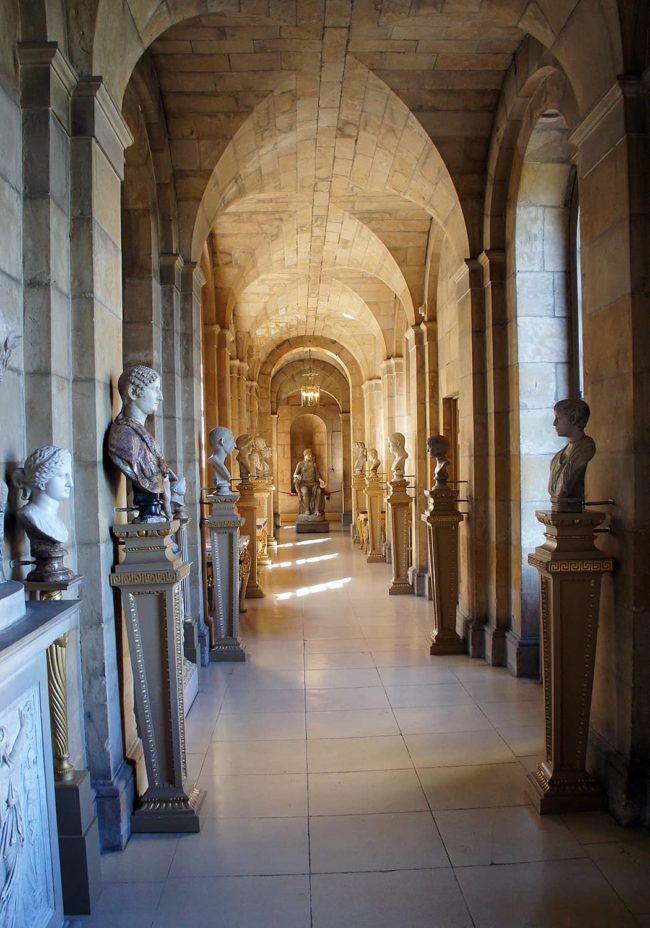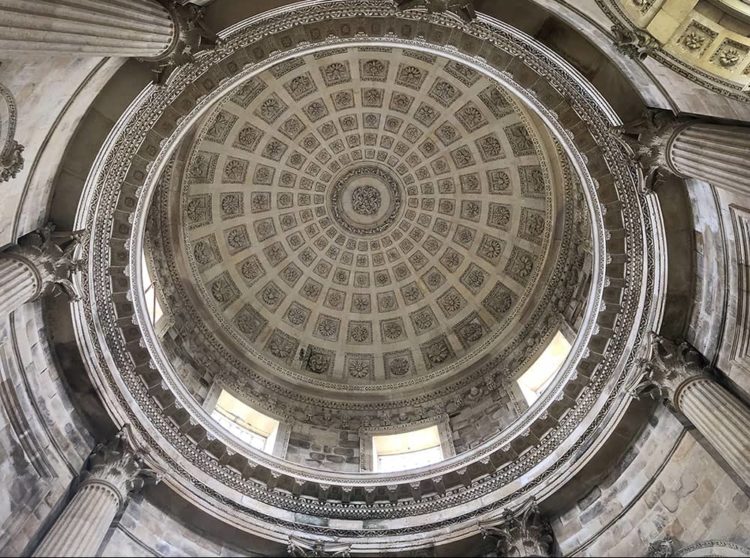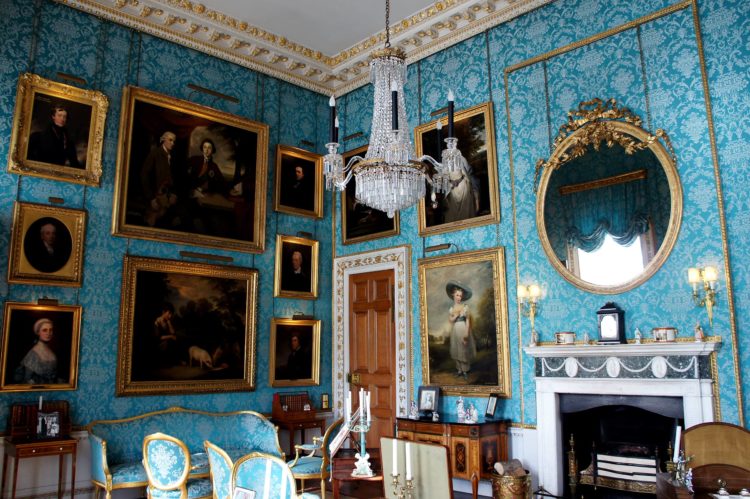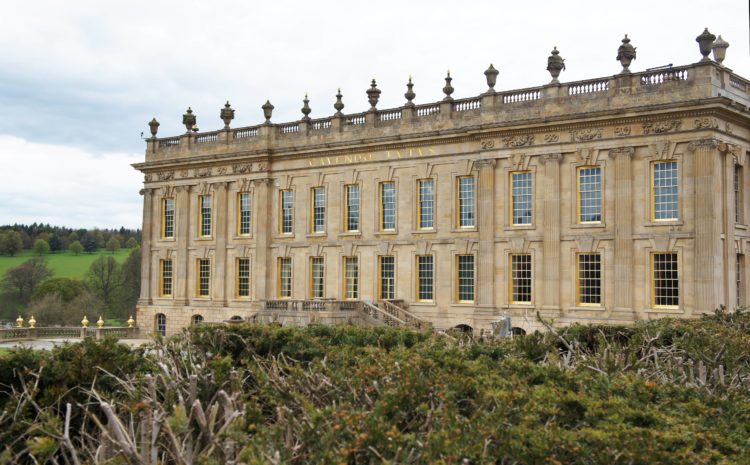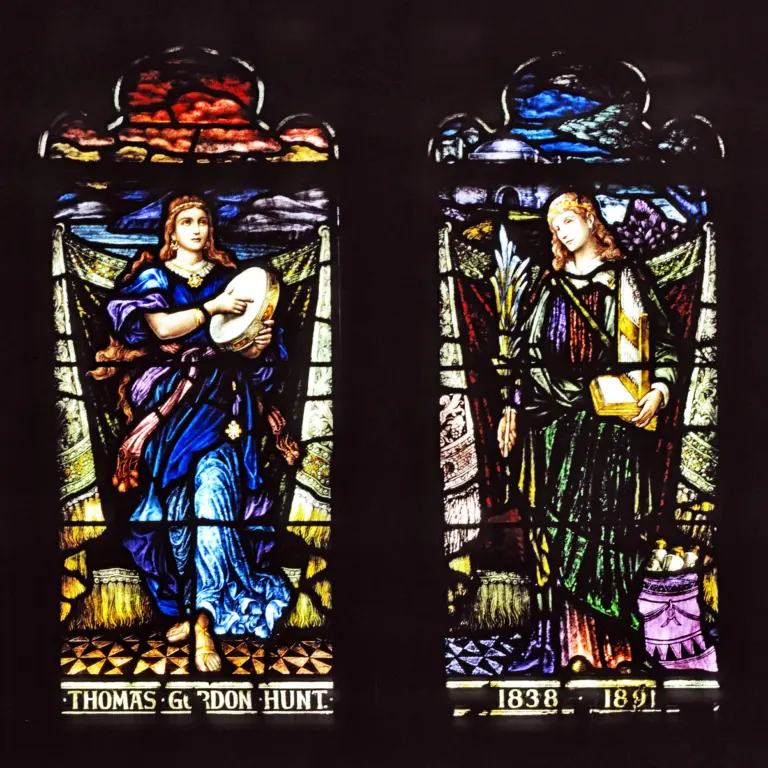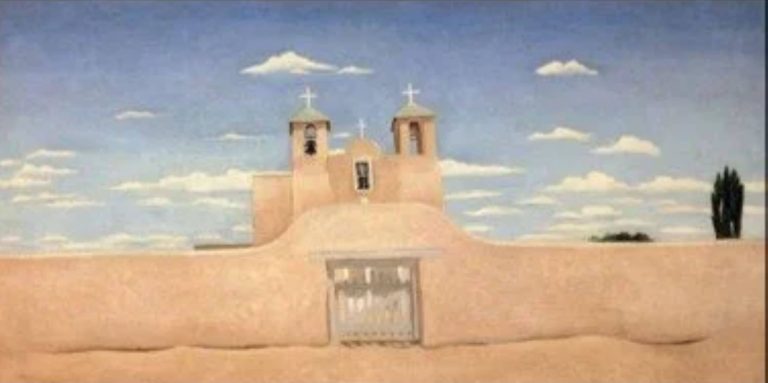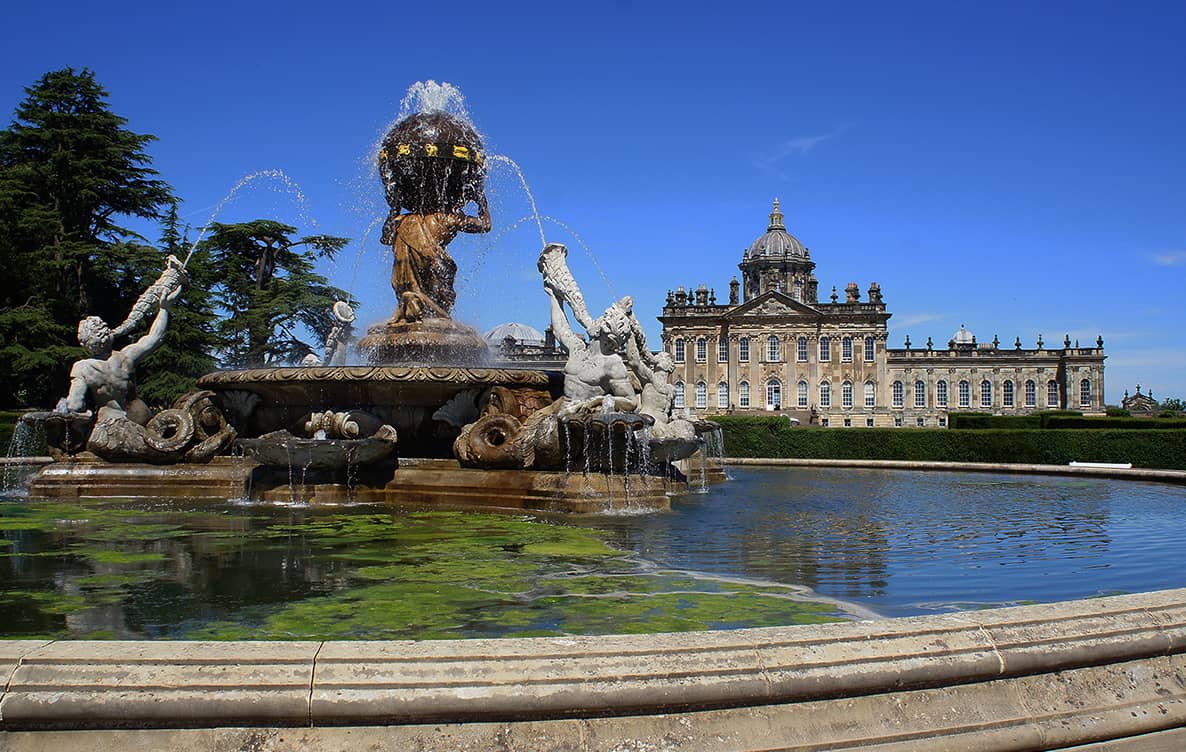
By Anne W. Semmes
Natalie Pray, who heads the Greenwich Branch of the English-Speaking Union (ESU), presents an impressive series of lectures each year for ESU members and guests, and of last Thursday week there were some 70 seen at the Round Hill Club to hear a talk on perhaps the two greatest British houses, Castle Howard and Chatsworth House. The returning speaker, Curt DiCamillo, often leads tours featuring the architectural and artistic heritage of Great Britain.
DiCamillo began with the Yorkshire located Castle Howard, he called, unabashedly “the greatest house,” as he described the “the most famous façade that faces south,” as seen in the 2008 film, “Brideshead Revisited,” and familiar as well in the long-running TV series by the same name. But how it came to be was a delicious tale.
So, at the end of the 17th century, the third Earl of Carlisle, with the last name of Howard, met up with a playwright [later architect] friend, John Vanbrugh, telling him of his unhappiness over proposed plans for his house. The playwright promptly pulled out a napkin, made a sketch and said, “How about something like this?” “And Lord Carlisle said, ‘That’s perfect, that’s what I want,’” told DiCamillo, “And that is how it was originally designed.”
Finished in the 1720’s, it was the first house with a dome in British history. “Only churches and government buildings had domes up until this point,” said DiCamillo. “It was grander than anything the King had at the time, and it was in the middle of nowhere in a howling Yorkshire Moor.”
The five-mile entryway to Castle Howard he called likely “the most dramatic of all the great houses of England and Wales. And when you get up to the gatehouse…this is the first building in Britain that had a pyramid [20-feet tall] put on it. And this is where a man lived with his wife and kids and his office is looking in front of the gates.”
And out on the great green lawn was the Mausoleum, with its interior 70-feet high, copied after the Pantheon in Rome. It includes a chapel and a crypt, “where the bodies go. They still have about 40 empty spaces if anybody is interested,” DiCamillo quipped.
“So, in the 18th century,” he continued, “It’s important to recognize, regardless of where you walk in this 10,000-acre park that surrounds this house, you were meant to have a view. Everything is meant to make you go ooh and ah when you see it. So, we should go inside the Castle’s Antique Passage which is lined with statues that came from Rome and Greece.”
It is here that DiCamillo began to touch on the owner costs of these great houses. He pointed to a first century Roman statue of a boy and his goat bought by the fifth Earl of Carlisle in 1768, but “given to the government in lieu of death duties, inherited taxes.” And “This is one of 89 pieces of sculpture that they gave voluntarily not to have to pay cash.” But the new twist is, “The government doesn’t want the art, so they give it to a museum and then the museum loans it back to the house where it originally was.” A “wonderful” new development, he noted “because it takes something away if you see this in a gallery museum versus a place where it’s been for 300 years.”
DiCamillo then took us into the Castle’s Great Hall. “It’s just so spectacular. Nothing else like this has ever been seen in British architecture before. This is so Italian. And this is the dome looking up 80 feet into the sky. It is an astonishing accomplishment. And in the 18th century, visitors couldn’t believe what they were seeing because it wasn’t just that it was in the middle of nowhere in Yorkshire, it was that nothing else like this existed anywhere in Britain.”
But there were more “personal” rooms he showed us, like the beautiful blue drawing room, and the red drawing room. And of this May DiCamillo learned, “They are preparing these rooms for bedrooms, because they want to start making money.” The Castle will have “private stays” for “an enormous amount of money, where you bring a group of eight of your best friends and you get to stay in these rooms.” Currently missing bathrooms, they are on order.
But it was that doodle art in the Castle collection made by the ninth Earl who built the chapel that brought the shock. “It’s a doodle he did of a tour with his family of Italy…They had a lot of kids.” The doodle includes their destinations of Naples, Rome, etc. but drawn by the city of Genoa is the drawing of a little boy. “That is his son,” told DiCamillo, “who they left behind in Genoa by accident for a day before they noticed he was missing.”
It was DiCamillo’s photograph taken from atop Chatsworth House located in Derbyshire Dales that kicked off that great house story. “Everything you see here is the result of this man, Capability Brown who changed forever British landscaping, because he believes in something that he called educated nature…And it was a revolt against the formality of the continental ways.”
And from that landscaping that for DiCamillo makes Chatsworth so “magical” came the great cascade of water that threads through the grounds. So, he explained, there was a “taming” of the surrounding moors, “and they created these weirs to funnel water down into this cascade…. it falls down these steps, 650 feet long, 24 steps…And Country Life magazine voted this the best water feature in Britain. And they get over 500,000 visitors a year just to see the gardens, which you can come in and walk for free. You have to pay to go to the house.”
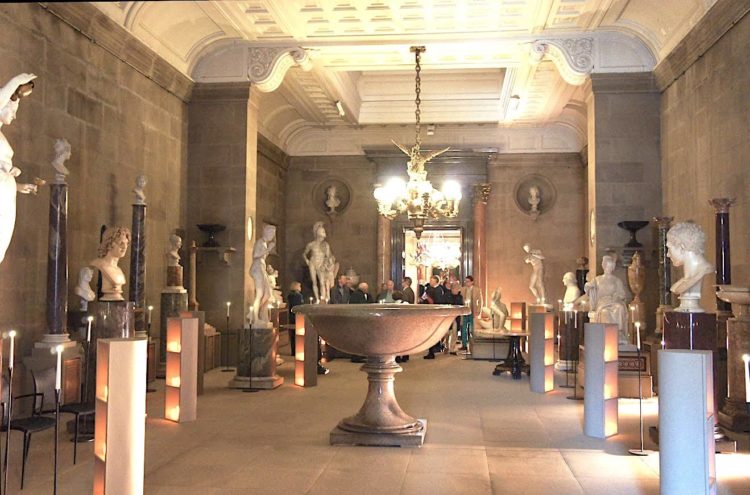
So, the historic owners of Chatsworth are the Cavendish family, the Dukes of Devonshire. And had we heard of the Cavendish banana, the most popular banana in the world? This banana, told DiCamillo, was developed at Chatsworth in its Great Conservatory designed by Jospeh Paxton, which was the largest conservatory or greenhouse in the world, that Paxton copied for the Crystal Palace in London. Its demise came in 1920, after World War I “when all the gardeners went away, and they never come back.”
But ongoing at Chatsworth is the kitchen garden. “In the 18th and 19th century,” said DiCamillo, “before there were supermarkets, every big house had a kitchen garden. You grew everything yourself because you were a self-contained community. And the Chatsworth kitchen garden has never stopped. And today because of this return to local food, it has become hugely important in the Chatsworth ecosystem, because the Chatsworth estate has 35,000 acres. And in that, there are about 15 villages that the estate owns, hundreds of houses, and they try to grow everything that people eat from their own gardens.”
The revelatory architecture of Chatsworth which has brought some 30 million visitors since 1950, told DiCamillo, he described as similar to “a palace of Louis XIV, with 297 rooms, 112 fireplaces, 68 bathrooms, 32 kitchens, 17 staircases, and a one-acre roof.” Note the 68 bathrooms. “Because when Deborah “Debo” Mitford, became the Duchess in the 1950s, and moved in with her husband, there was one bathroom in all of this. She put all the 67 bathrooms in.”
DiCamillo shared a plentitude of “huge jewels” found at Chatsworth with tiaras and necklaces featuring first century cameos of Emperor Tiberius but what impressed more was the Library with its 17,000 volumes. “This is considered the most important country house library in the world,” he said. “There are six full-time librarians who work here.” And he added another enticement – the dining room, “which is an astonishing space, which you can still, even today if you have enough money, rent it yourself for your next party.”
